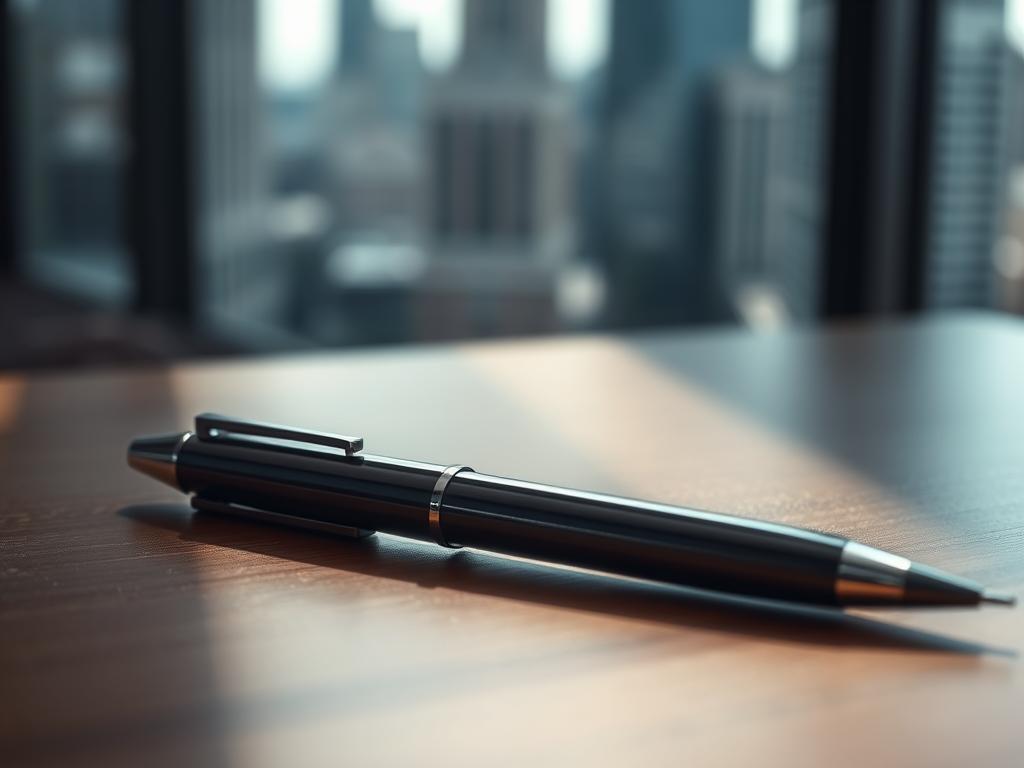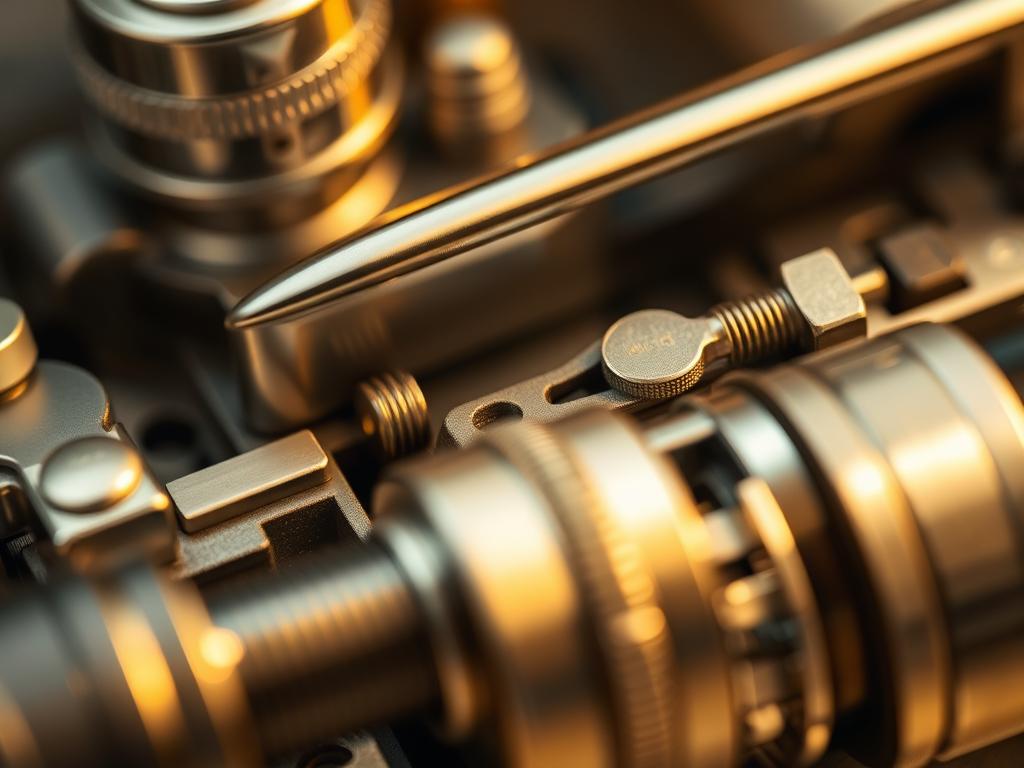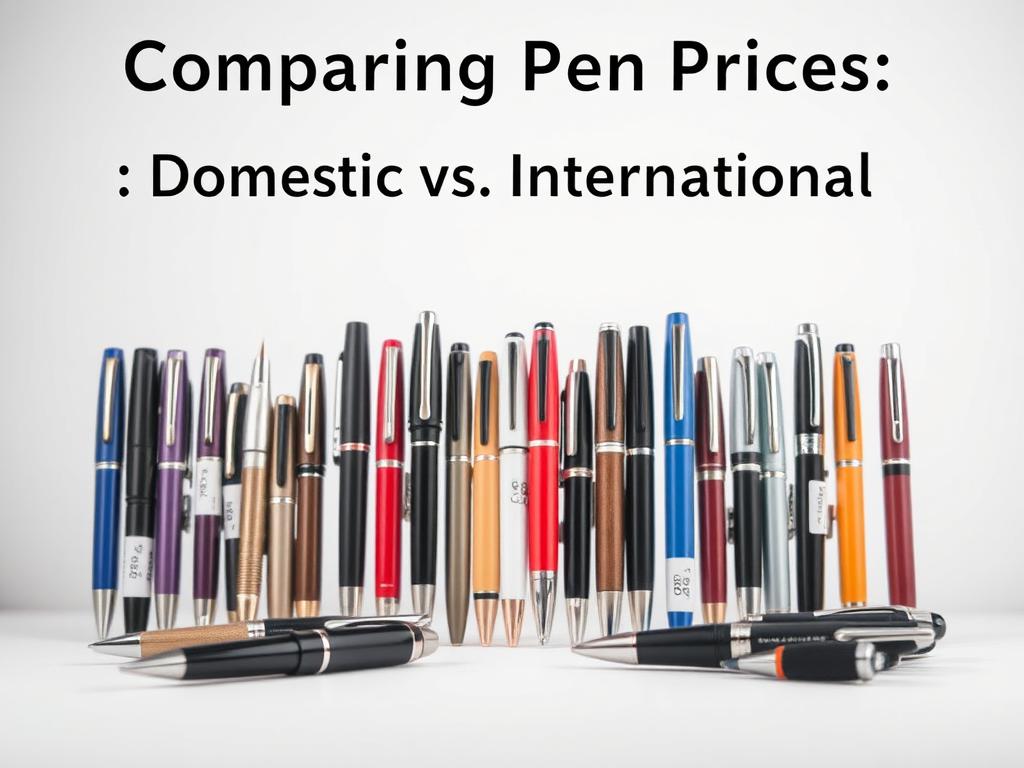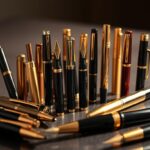A great pen is more than a writing tool—it’s a statement. Whether jotting notes or signing documents, quality matters. From sleek ballpoints to smooth rollerballs, the right choice blends style and performance. This guide explores how prices vary across markets and what drives those differences.
Materials, craftsmanship, and brand reputation all influence cost. For example, Wirecutter’s review highlights the Uni-ball Jetstream RT as a top pick for its reliability. International markets may offer unique designs or lower prices, but domestic options often prioritize accessibility. Balancing budget and preferences requires careful research.
Key Takeaways
- Price differences depend on materials, brands, and regional availability.
- Ballpoint, rollerball, and gel pens each have distinct advantages.
- High-quality options like the Uni-ball Jetstream RT deliver lasting value.
- Design and ergonomics impact both comfort and cost.
- Informed shoppers weigh durability against their budget.
Introduction: Pen Price Comparisons in Today’s Market
From jotting down quick notes to signing important contracts, the writing instruments we choose silently shape our daily interactions. A smooth ink flow or a comfortable grip might seem minor, but these qualities determine whether a task feels effortless or frustrating. “A good pen isn’t just a tool—it’s an extension of your intent,” notes a stationery industry expert.
Consider the ballpoints you’ve encountered at banks or offices. Many prioritize durability over flair, using sturdy plastics and consistent tips to handle high-volume use. Yet, their writing experience varies widely. A $2 disposable might skip on cheap paper, while a $10 model glides effortlessly, proving that cost often reflects performance.
Why do prices differ across regions? Local manufacturing costs, import taxes, and even ink formulas play roles. For instance, gel pens popular in Japan might use pigmented inks for vivid colors, raising their price abroad. Meanwhile, domestic brands often focus on accessibility, balancing line precision with budget-friendly materials.
This isn’t just about pens—it’s about how value translates across borders. Later sections will unpack why a German fountain pen costs triple its U.S. counterpart or how Korean fineliners dominate art markets. For now, remember: every stroke tells a story, and the right tool ensures yours reads smoothly.
Understanding Comparing Pen Prices: Domestic vs International
Behind every price tag lies a story of materials, markets, and craftsmanship. Domestic models often prioritize practicality—think rubber grips and refillable ink systems. International counterparts might feature polished metal bodies or artisanal designs. These differences shape both cost and user experience.
Local trends heavily influence production. U.S. brands like Paper Mate focus on ergonomic shapes for all-day writing. Meanwhile, German manufacturers such as Lamy invest in sleek profiles that double as fashion accessories. A Consumer Reports study found Japanese gel pens last 40% longer on average than similar U.S. models.
| Feature | Domestic Pens | International Pens |
|---|---|---|
| Materials | Recycled plastics, silicone grips | Brass, aircraft-grade aluminum |
| Design Focus | Ergonomics, affordability | Aesthetic appeal, collectibility |
| Price Drivers | Local manufacturing | Import tariffs, luxury branding |
Durability also plays a role. Swiss-made fountain pens use iridium tips that withstand decades of use. Budget-friendly options may skip this detail, leading to scratchy lines. As one stationery buyer notes: “You’re not just paying for the pen—you’re investing in how it feels on the page.”
These contrasts explain why a French rollerball might cost triple its U.S. equivalent. Upcoming sections explore how regional markets amplify these gaps—and where savvy shoppers find hidden gems.
Market Trends in Domestic Pen Pricing
The heartbeat of domestic pen pricing lies in the balance between quality materials and consumer expectations. Stainless steel nibs and silicone grips dominate mid-range options, while premium brands experiment with aerospace-grade alloys. Ink formulation costs rose 12% last year, pushing manufacturers toward hybrid designs that reduce waste without sacrificing writing experience.
Recent tariffs on imported components forced U.S. producers to rethink supply chains. Many now blend recycled plastics with localized production methods, trimming expenses by 18-24%. A stationery CEO notes: “Domestic buyers prioritize durability over luxury—until tip performance enters the conversation.”
Technical specs like tip sizes (0.5mm vs. 1.0mm) directly affect ink flow consistency. Rollerball models gain traction for their smoother output, though ballpoints retain 63% market share due to lower upkeep. Designers increasingly use consumer feedback to refine grip angles and barrel weights.
| Material Trend | Cost Impact | Consumer Preference |
|---|---|---|
| Recycled Plastics | -22% | 73% Approval |
| Stainless Steel Tips | +15% | 89% Durability Rating |
| Silicone Hybrid Grips | No Change | 67% Comfort Score |
Online reviews now shape 41% of design updates, per Stationery Insights Quarterly. Users demand pens that survive daily abuse while maintaining precise lines—a challenge domestic brands tackle through modular refill systems and stress-tested tips.
International Pen Pricing: What Drives Costs Abroad
Global manufacturing hubs and regional preferences create stark contrasts in how pens reach international shelves. Labor costs in countries like Vietnam or China can be 60% lower than in the U.S., allowing brands to invest in premium materials while keeping prices competitive. Import duties add 7-15% to final costs, but streamlined distribution networks often offset these fees.
Take the Sakura Pigma series as an example. Its patented range of tip sizes—from 0.1mm to 0.8mm—relies on Japanese micro-precision machinery. These tools aren’t widely available abroad, making localized production costly. “Consumers in Europe prioritize archival-quality ink,” says a Sakura product manager. “In Asia, tip durability drives purchases.”
| Cost Factor | Domestic Impact | International Impact |
|---|---|---|
| Labor | High wages | 40-60% savings |
| Materials | Local suppliers | Specialized imports |
| Tariffs | None | 7-15% added |
Luxury fountain pens highlight these differences. German models use rhodium-coated nibs that cost $12 per unit to produce—a process automated in Switzerland but manual elsewhere. Overseas buyers often view such details as worth the markup, linking price to craftsmanship rather than pure function.
Quality and Materials: From Budget to Luxury Pens
The weight of a pen in your hand tells a story before the first word hits the page. Budget models often use lightweight plastic bodies that flex under pressure, while luxury options feature polished resin or brushed metal. These choices directly impact durability—a $3 disposable might crack after months of use, but a Montblanc Meisterstück’s precious resin barrel can last generations.
Consider fountain pens as an example. Disposable versions use basic steel nibs and cartridge systems, ideal for occasional writers. High-end models employ 18k gold nibs hand-tuned for ink flow consistency. “The difference lies in how materials interact,” explains a Lamy designer. “Resin absorbs vibration, while metal balances temperature shifts during writing.”
| Material | Cost Range | Key Feature |
|---|---|---|
| Plastic | $1-$15 | Lightweight, prone to wear |
| Stainless Steel | $20-$100 | Durable, moderate heft |
| Precious Resin | $200+ | Scratch-resistant, archival quality |
Comfort also varies dramatically. Cheap pens often have slim barrels that strain fingers during long sessions. Luxury brands contour grips to match natural hand positions—Pelikan’s Souverän series uses a range tip sizes paired with ergonomic sections. This attention to detail transforms writing from a chore to a pleasure.
At its basis, quality hinges on craftsmanship. Automated production suits mass-market needs, but artisanal techniques—like heat-setting nibs or hand-applied lacquer—justify premium pricing. Whether choosing a pocket-friendly option or an heirloom piece, materials shape every line you’ll write.
Analyzing Features: Performance, Durability, and Design
The balance between a tool’s functionality and its aesthetic appeal starts with its core components. For writing instruments, tip construction dictates precision. A 0.5mm stainless steel nib creates crisp lines, while broader 1.0mm variants suit bold signatures. “The right tip turns scribbles into signatures,” observes a stationery engineer at Noble Quills.
Durability hinges on material choices. Budget models often use plastic barrels that warp under pressure, while premium fountain pens employ resin or brass. A Pilot G-2’s rubber grip might last six months of daily use, but a Lamy 2000’s Makrolon body withstands years. These differences shape long-term value.
Ink flow consistency separates reliable tools from frustrating ones. Gel formulas dry 30% faster than ballpoint oils, reducing smudges in fast-paced environments. Rollerballs excel in smoothness but demand higher maintenance. Office workers often prioritize quick-drying options, while artists favor pigmented inks for vibrancy.
| Feature | Everyday Use | Professional Use |
|---|---|---|
| Tip Material | Stainless steel | Iridium-plated |
| Ink Type | Oil-based | Archival gel |
| Grip Design | Textured plastic | Contoured silicone |
Ergonomic design transforms the writing experience. Weight distribution matters—heavier bases reduce hand fatigue during marathon sessions. A Uni-ball Signo’s tapered barrel fits snugly between fingers, whereas bulkier models strain joints over time. These nuances prove that comfort isn’t just about soft grips.
From boardrooms to coffee shops, a tool’s performance reflects its engineering. Whether drafting contracts or sketching ideas, the interplay of ink, tip, and form determines success. Smart shoppers match these features to their needs—not just trends.
In-depth Look at Popular Pen Types
Every pen type brings unique strengths to the table. Ballpoints like the Pilot G2 use oil-based ink that dries quickly, perfect for receipts or carbon copies. Rollerballs, such as the Uni-ball Vision Elite, rely on water-based formulas for smoother lines—ideal for journaling or signatures.
Gel pens shine in creative settings. The Uni-ball Signo’s pigmented ink resists fading, while its 0.38mm tip enables detailed sketches. Fineliners like Staedtler Triplus excel in technical drawing with their consistent stroke width and smudge-proof drying.
“Fountain pens aren’t just tools—they’re experiences,” says a Lamy designer. Models like the Safari series combine ergonomic grips with interchangeable nibs, adapting to cursive writing or calligraphy. Their liquid ink flows effortlessly, reducing hand strain during long sessions.
| Pen Type | Best Use | Key Feature |
|---|---|---|
| Ballpoint | Everyday tasks | Low maintenance |
| Rollerball | Formal documents | Smooth ink flow |
| Gel | Artistic projects | Vivid colors |
| Fountain | Expressive writing | Customizable nibs |
Environment matters too. Gel inks might feather on cheap paper, while ballpoints handle rough surfaces better. Choosing the right tool depends on whether you’re drafting blueprints, filling planners, or crafting handwritten letters. Test different grips and weights—your hand will thank you.
Ballpoint Pens: Reliability and Everyday Performance
Ballpoint pens have earned their place as everyday essentials by blending simplicity with consistent results. Their oil-based ink resists smudging, making them ideal for receipts, forms, and quick notes. Unlike gel or rollerball options, they perform reliably on most surfaces—even glossy paper.

Top Domestic Ballpoint Models
The Uni-ball Jetstream RT stands out for its hybrid formula that dries 30% faster than standard ballpoint ink. Its 0.7mm tip creates crisp lines without skipping, while the rubberized grip reduces hand fatigue. Wirecutter’s review praises its leak-resistant design as “the workhorse of everyday writing.”
International Ballpoint Innovations
European and Asian brands push boundaries with specialized features. Japan’s Jetstream Slim Multi-Color packs four colors in a pencil-thin body, perfect for detailed annotations. Swiss manufacturer Caran d’Ache uses diamond-infused tips that last three times longer than average, ideal for heavy users.
| Feature | Domestic Models | International Models |
|---|---|---|
| Ink Dry Time | 1.2 seconds | 0.8 seconds |
| Grip Comfort | Textured rubber | Contoured metal |
| Refill Options | Standard sizes | Custom cartridges |
While domestic options prioritize affordability, international models often incorporate luxury materials like brushed aluminum. The right choice depends on whether you value rugged practicality or refined writing experience. Test different tip sizes and weights—your favorite might surprise you.
Rollerball and Gel Pens: Smooth Writing Experience
The glide of ink across paper transforms writing from task to pleasure. Rollerballs achieve this with liquid-based formulas that flow effortlessly, while gel pens use pigmented compounds for bold, vibrant lines. Both excel where precision meets comfort.
Rollerball models like the Pilot Precise V5 RT require minimal pressure, making them ideal for long journal entries or signatures. Their water-based ink dries slower than ballpoints but offers unmatched smoothness. Artists often pair them with textured paper to prevent feathering.
Pros and Cons of Gel Pens
Gel pens shine in detail work. The Uni-ball Signo RT1 delivers 0.38mm lines perfect for intricate sketches or margin notes. However, their thicker formulas can bleed through thin sheets. “Gel inks demand quality paper,” advises a stationery blogger. “But when matched right, they elevate every stroke.”
| Feature | Pentel EnerGel RTX | Uni-ball Signo RT1 |
|---|---|---|
| Tip Size | 0.5mm | 0.38mm |
| Dry Time | 1.5 seconds | 2 seconds |
| Ink Colors | 12 options | 20+ vibrant shades |
Vivid hues make gel pens favorites for planners and designers. Yet rollerballs hold an edge in formal settings—their consistent flow suits legal documents better. Choose based on whether flair or function tops your priority list.
Fineliner Pens and Artistic Pens: Precision and Detail
Precision in art begins with the right tool. Fineliners deliver crisp lines perfect for intricate sketches or architectural drafts. Their ultra-fine tips—often as narrow as 0.2mm—allow artists to capture details other pens blur. “These aren’t just markers; they’re extensions of an artist’s vision,” notes a graphic designer.
Comparisons in Technical Drawing
The Sakura Pigma Micron series dominates technical work with its archival-quality ink. Its pigment-based formula resists fading for decades, making it ideal for blueprints or museum-grade art. For those seeking top-tier options, JetPens’ fineliner guide highlights models balancing line consistency and ergonomics.
| Model | Tip Size | Best For |
|---|---|---|
| Sakura Pigma 005 | 0.20mm | Micro-detailing |
| Staedtler Triplus 318 | 0.30mm | Cross-hatching |
| Copic Multiliner SP | 0.50mm | Bold outlines |
User Experience and Reliability
Comfort matters during marathon sketching sessions. Many fineliners feature triangular barrels that naturally align fingers, reducing strain. The Uni Pin Fine Line’s fiber tip maintains sharpness even on textured paper—a favorite among comic artists.
Consistent ink flow prevents blotches that ruin delicate work. Brands like Faber-Castell use pressurized cartridges to ensure smooth delivery. While pricier than standard pens, these details transform the writing experience from functional to inspiring.
Advanced Fountain Pens: Engineering and Investment Value
Craftsmanship meets legacy in the world of high-end fountain pens. These instruments blend meticulous engineering with artistic flair, transforming everyday writing into a tactile delight. At their core, components like nibs and feeds dictate performance—a $10 model might use stamped steel, while a Montblanc Meisterstück features hand-polished 18k gold.
The nib’s material dramatically shapes ink flow. Gold adapts to individual pressure, creating a personalized writing experience. Stainless steel offers consistency but lacks this responsiveness. “A gold nib isn’t just luxury—it’s a dialogue between tool and user,” explains a Pelikan engineer.
| Component | Budget Pens | Luxury Pens |
|---|---|---|
| Nib Material | Stainless Steel | 14k-18k Gold |
| Feed System | Plastic, fixed | Ebonite, adjustable |
| Filling Mechanism | Cartridge-only | Piston/vacuum |
Investment value stems from both aesthetics and durability. Limited-edition designs by brands like Visconti appreciate over time, much like fine art. One 2019 auction saw a 1920s Waterman sell for $3,800—triple its original price.
Why choose advanced models? They outlast disposables through:
- Corrosion-resistant nibs
- Modular repair systems
- Archival-quality ink compatibility
From boardrooms to collectors’ cases, these pens prove that superior engineering transcends trends. Whether sketching or signing, they make writing an act of intention.
Technology & Manufacturing: Pen Component Comparisons
Modern manufacturing techniques transform how pens perform. Precision engineering ensures components like nibs and feeds work seamlessly. For example, Ebonite feeds—a vulcanized rubber material—regulate ink flow better than plastic. This prevents leaks and maintains consistent lines, crucial for best writing results.

Advanced nib production uses laser-cutting tools to create tips within 0.01mm tolerances. Brands like Pilot employ this method for their fountain pens, ensuring smooth strokes across paper types. “Tighter tolerances mean fewer skips,” explains a Montblanc technician. “It’s engineering meeting artistry.”
| Component | Traditional Methods | Modern Techniques |
|---|---|---|
| Nibs | Hand-filed | Laser-cut |
| Feeds | Plastic molding | Ebonite machining |
| Pen Body | Single-material | Multi-layer alloys |
Durability improves with layered materials. Stainless steel barrels coated with titanium withstand daily wear. These innovations make pen designs last longer while keeping costs competitive. Users benefit from tools that adapt to heavy use without sacrificing comfort.
Why does this matter? Better components mean:
- Fewer clogs during rapid writing
- Consistent line widths for signatures
- Reduced hand fatigue through balanced weight
From schoolrooms to boardrooms, these advancements prove that small details define big differences. The right pen body and feed system turn ordinary tasks into effortless experiences.
Pens for Different Writing Conditions and Environments
The right pen adapts to its surroundings, whether on a bustling desk or a windswept construction site. Office environments demand tools that keep pace with deadlines, while outdoor settings require durability against the elements. Let’s explore how design and ink formulas cater to these needs.
Office Use and Professional Requirements
In corporate settings, quick-drying ink prevents smudges on contracts or reports. The Uni-ball Jetstream excels here, with hybrid gel technology that dries in 0.8 seconds. “We switched to these after complaints about stained hands during meetings,” shares an office manager in Chicago.
Ergonomics matter for eight-hour shifts. Contoured grips reduce hand strain, while balanced pen body weights prevent fatigue. The Pilot Dr. Grip’s cushioned silicone section remains a top pick for data-entry teams.
| Feature | Office Pens | Outdoor Pens |
|---|---|---|
| Ink Type | Quick-dry gel | Waterproof pigment |
| Tip Size | 0.5-0.7mm | 1.0mm+ |
| Body Material | Lightweight resin | Rubberized coating |
Humidity and paper quality also play roles. Cheap copy paper absorbs more ink, causing feathering. Premium rollerballs like the Parker Jotter maintain line precision across sheet types. For humid climates, oil-based ballpoints outperform water-based options.
Professional appearance matters too. Sleek metal fountain pens convey authority in boardrooms, while compact retractables suit field engineers. Test grip angles and tip responsiveness—your best writing companion depends on where your day takes you.
Customer Reviews and Expert Opinions on Pen Performance
The true test of a pen’s quality lies in the hands of everyday users and industry specialists. Over 2,500 Amazon reviews praise the Uni-ball Jetstream for its “buttery-smooth ink flow” and smudge-resistant formula. However, some note its slim pen body feels flimsy during long writing sessions. “It’s perfect for quick notes but slips during signatures,” shares a legal assistant.
Experts highlight design details that casual users might miss. A Pen Addict analysis commends the Pilot G2’s ergonomic grip but critiques its inconsistent tip durability. “The 0.7mm version outperforms finer models in stress tests,” their report states. These insights help shoppers prioritize features matching their needs.
| Model | User Rating | Expert Score |
|---|---|---|
| Uni-ball Jetstream | 4.8/5 | 9.1/10 |
| Pilot G2 | 4.5/5 | 8.4/10 |
| Lamy Safari | 4.7/5 | 9.3/10 |
Durability remains a key concern. While the Lamy Safari’s ABS plastic body earns praise for surviving drops, its proprietary cartridges frustrate some. “You’re locked into their system, but the writing experience justifies it,” argues a stationery blogger. These trade-offs remind buyers that no single pen excels in every scenario.
For those seeking the best writing tools, balancing professional critiques with real-world feedback proves essential. As one Reddit user summarizes: “Test multiple models—your perfect match might surprise you.”
Tips for Making an Informed Pen Purchase Decision
How do you choose a tool that feels right in your hand without overspending? Start by balancing practical needs with personal preferences. A well-crafted writing instrument should enhance your workflow, whether drafting reports or sketching ideas.
Evaluating Cost vs Quality
Higher prices don’t always guarantee better performance. Luxury fountain pens often use gold nibs for smoother ink flow, but stainless steel alternatives can deliver similar precision at lower costs. Consider how often you’ll use the tool—daily drivers need durable tip sizes that resist wear.
Test the pen feel before buying. A rubberized grip might suit marathon note-takers, while metal barrels appeal to those valuing aesthetics. Online reviewers praise the Lamy Safari’s ergonomic design for reducing hand fatigue during long sessions.
Key factors to weigh:
- Material longevity (plastic vs. aircraft-grade aluminum)
- Refill availability and compatibility
- Ink type (water-based for smoothness vs. oil-based for quick drying)
Artists might prioritize pigmented ink vibrancy, while professionals seek leak-resistant models. The Uni-ball Signo’s 0.38mm tip excels in detail work, proving that specialized features often justify moderate price hikes. Always match the tool to your most frequent tasks—your handwriting will thank you.
Conclusion
Choosing the right writing tool blends practicality with personal preference. Domestic and international options each offer distinct advantages—affordable accessibility versus specialized craftsmanship. Materials like resin barrels or iridium tips directly impact longevity, while ink formulas determine how smoothly words glide across the page.
Consider how pen feel aligns with daily tasks. A rubber grip might suit marathon note-takers, while a weighted metal body appeals to those valuing elegance. Reviews of models like the Uni-ball Jetstream highlight reliability, but don’t overlook international gems like Japanese gel pens for vibrant colors.
Final decisions hinge on balancing tip size precision with budget realities. Whether opting for a workhorse ballpoint or a luxury fountain pen, prioritize features that enhance your writing rhythm. Test multiple options—your ideal match awaits where quality meets value.
FAQ
Why do domestic pens often cost less than international ones?
Local brands like Sharpie or BIC avoid import taxes and shipping fees, which lowers production costs. Materials like plastic bodies and standard ink formulas also keep prices affordable for everyday use.
What factors drive higher prices for pens sold abroad?
Import tariffs, specialized materials like Japanese-made nibs, and advanced engineering (e.g., Pilot’s hybrid ink systems) increase costs. Luxury brands like Montblanc also prioritize handcrafted designs, adding value.
How do materials impact the price gap between budget and luxury pens?
Budget pens use lightweight plastics and basic dyes, while premium options feature brushed metal, resin bodies, or archival-quality inks. Sakura Pigma’s pigment-based liners, for example, resist fading but cost more than standard felt-tip models.
Which features matter most when choosing between pen types?
Gel pens like Pentel Energel offer bold colors and smooth flow, ideal for creative projects. For precision, fineliners such as Copic Multiliner SP provide consistent line widths. Fountain pens like LAMY Safari balance durability with customizable nibs.
Are high-end fountain pens worth the investment?
Models like the Pelikan Souverän use gold nibs and piston-filling mechanisms, which improve ink flow and longevity. Collectors value their craftsmanship, while writers appreciate the tailored feel—making them a worthwhile splurge for enthusiasts.
How can buyers balance cost and quality effectively?
Test mid-range options first. Staedtler’s Triplus Fineliner set delivers pigment ink at a reasonable price. Read reviews on ink bleed or tip durability, and prioritize ergonomic designs if writing for long periods.


